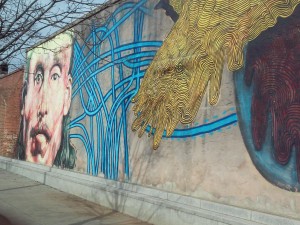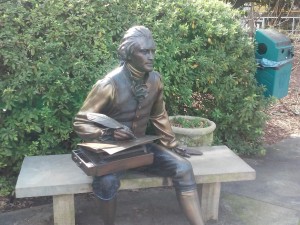Recognizing Campus Landscapes as Learning Spaces

In the article “Recognizing Campus Landscapes as Learning Spaces”, authors Kathleen G Scholl and Gowri Betrabet Gulwadi explain how the modern college has moved away from the isolation “elitist” feel that that had dominated for many generations, to one that is now inclusive and open to more people. Colleges now are intended to make students feel more accepted and to truly be apart of the campus community and identity. Both authors explain how the growing demographic changes are going to have major repercussions on many colleges as more students of different ethnic, cultural, and ideological views are now going to be attending the same place. An astounding statistic is that “In 2009, 20.4 million students were enrolled in 2- or 4-year colleges and universities. By 2019, enrollments are expected to rise 9% for students under age 25, and rise 23% for students over the age of 25 (Snyder & Dillow, 2011)”. It is now being an accepted part of the cultural norm that every child in America should receive the opportunity to receive a college education and be able to elevate themselves in society. The article continues by quoting different other writers who explain the importance of college inclusiveness is to the average student and how it is beneficial for the later career,”Well-designed and connected networks of indoor and open spaces on campuses can be key, yet typically overlooked catalysts, in student learning and a strong influence on students’ initial and longstanding experiences that promote a sense of belonging to the learning community” (Boyer, 1987; Greene, 2013). Continuing the article, both authors go on to explain the very history of college and how it has affected the academia and intellect of society. The original intent of college was to educated many of the sons of the upper class of the country. This caused their to be large number of Americans to be illiterate with affected the productivity of the county. This changed with the passage of the Morril Act of 1862 which led to the creation of many new state colleges around the country. For the first time, many middle class boys were now able to attend college and were given the resources needed to elevate their standing in society. For the next 100 years, there was much social change in this county where women an minorities were being accepted into the colleges. Youth as well as the liberalism of college led to many social movements to grow on college campuses such as anti war activism as well as ending racial discrimination.Today the campus open space still remains a significant center for teaching and learning for students in natural resources management, sustainability/ecology, agriculture, forestry, etc. and more recently, a focus on environmental education and sustainable practices (Painter, et. al., 2013). The article concludes with the continued importance of creating environments that are to be socially accepted to many of the newer students. Traditional campus indoor spaces, by necessity and function, provide ample opportunities for structured learning experiences that draw upon students’ direct attention. However, a student’s learning experience is not often balanced by unstructured or structured opportunities for drawing forth effortless, indirect attention that occur in human-nature interactions (Valles-Planells, et. al, 2014). When students are in a more accepting place, they are more likely to strive harder and to achieve more of their potential.
Scholl, Kathleen, & Gowri Betrabet Gulwadi. “Recognizing Campus Landscapes as Learning Spaces.” Journal of Learning Spaces [Online], 4.1 (2015): n. pag. Web. 13 Feb. 2016









